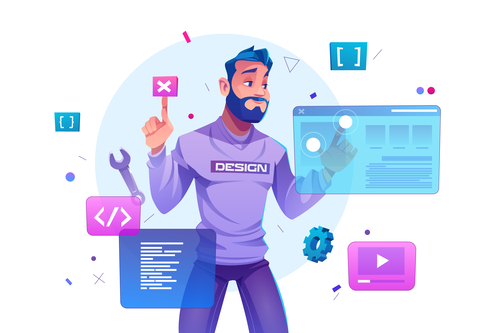Challenges Faced by Web Designers in India and How to Overcome Them

Web design is a dynamic and rapidly evolving field, and web designers in India face unique challenges that require innovative solutions. This article explores some of the primary obstacles encountered by Indian web designers and offers strategies to overcome them.
- Staying Updated with Rapid Technological Changes
Challenge: The field of web design is characterized by continuous advancements in technology, including new frameworks, languages, and tools. Keeping up with these changes is crucial for delivering cutting-edge solutions but can be daunting.
Solution:
- Continuous Learning: Engage in regular online courses, webinars, and workshops. Platforms like Coursera, Udemy, and LinkedIn Learning offer up-to-date courses on the latest web design technologies.
- Community Involvement: Join local and international web design communities. Participation in forums, discussion groups, and attending conferences can provide insights into emerging trends and best practices.
- Experimentation: Allocate time for experimenting with new tools and technologies. Practical experience helps in better understanding and faster adoption of new trends.
- Balancing Creativity and Client Expectations
Challenge: Striking a balance between the creative vision of a designer and the specific demands of clients can be challenging. Clients may have rigid ideas that do not align with the designer’s innovative approach.
Solution:
- Effective Communication: Establish clear communication channels with clients from the outset. Understanding their vision and requirements thoroughly can prevent conflicts.
- Educating Clients: Sometimes clients are not aware of the latest design trends or best practices. Educating them about the benefits of modern design techniques can help in aligning their expectations with creative solutions.
- Flexibility: While it is essential to maintain creativity, flexibility in accommodating client feedback and making necessary adjustments is crucial.
- Dealing with Diverse Cultural Preferences
Challenge: India is a culturally diverse country with varied aesthetic preferences. Designing websites that cater to a broad audience with different cultural backgrounds can be difficult.
Solution:
- Research: Conduct thorough research on the target audience and understand their cultural nuances and preferences. This includes color schemes, imagery, and design elements that resonate with different cultural groups.
- User Testing: Implement user testing with a diverse group of users to gather feedback and make necessary adjustments to the design.
- Inclusive Design: Adopt inclusive design principles that cater to a wide range of users, ensuring that the design is accessible and appealing to all cultural segments.
- Resource Constraints
Challenge: Many Indian web designers work with limited resources, whether in terms of budget, tools, or team size. This can hinder the ability to deliver high-quality projects on time.
Solution:
- Open Source Tools: Leverage open-source tools and platforms that offer robust functionality without the cost associated with premium tools. Platforms like WordPress, GIMP, and Inkscape are excellent resources.
- Efficient Project Management: Utilize project management tools like Trello, Asana, or JIRA to manage tasks effectively, streamline workflows, and ensure timely delivery.
- Collaboration: Collaborate with other designers and developers to share resources and knowledge. Networking can lead to partnerships that compensate for resource limitations.
- Competition and Market Saturation
Challenge: The market of web design India is highly competitive, with many designers and agencies vying for the same projects. Standing out in a saturated market can be difficult.
Solution:
- Specialization: Focus on a niche market or specific industry to differentiate yourself from the competition. Specializing in areas like e-commerce, healthcare, or education can help in building a strong reputation.
- Portfolio Development: Build a strong portfolio that showcases a range of skills and successful projects. Highlighting case studies and client testimonials can build credibility.
- Digital Marketing: Invest in digital marketing strategies to increase visibility. Utilizing SEO, social media marketing, and content marketing can attract potential clients and improve market presence.
- Access to High-Speed Internet
Challenge: Despite significant advancements, some areas in India still face issues with high-speed internet access, which can affect the efficiency of web designers.
Solution:
- Local Solutions: Work with local internet service providers to find the best available options. Sometimes, investing in a higher-tier plan or business-grade internet service can solve connectivity issues.
- Offline Tools: Use offline versions of design tools when possible. Tools like Adobe XD, Sketch, and others offer robust offline functionality that can minimize dependence on constant internet access.
- Efficient Planning: Plan tasks that require heavy internet usage for times when the connectivity is more reliable, and schedule other tasks during periods of lower connectivity.
Conclusion
Web designers in India face a myriad of challenges, from keeping up with rapid technological changes to dealing with diverse cultural preferences and resource constraints. By adopting a proactive approach to continuous learning, effective communication, resource optimization, and strategic differentiation, these challenges can be transformed into opportunities for growth and innovation. As the digital landscape continues to evolve, Indian web designers have the potential to lead in delivering creative and effective web solutions on a global scale.







